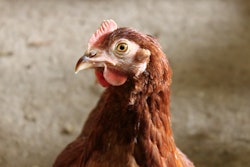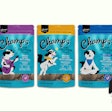
When produced at large scales, pet food proteins derived from microbes may have sustainability benefits over animal and even plant sources, while potentially avoiding pets’ allergic reactions to beef, chicken or fish. However, scientists haven’t conducted much research on the nutritional quality of novel pet food ingredients made from single-celled organisms. A research team set out to fill this knowledge gap. The researchers, based at the University of Illinois at Urbana-Champaign in the United States, conducted an experiment to analyze the amino acid digestibility and assess the protein quality of a novel microbial protein and compare it with other protein-based ingredients. The scientists used FeedKind, a microbial protein and fat source produced through fermentation by Calysta.
Like protein sources from algae, insects and cell-cultures, fermented microbial proteins’ sustainability advantages come from using less land, water, feed and other resources than livestock. In the case of microbial protein, resource use could be even lower than soy and other plant-based proteins. One commercial-scale FeedKind protein plant, if used to replace soy products, would free up enough land to feed as many as 250,000 people, according to the company. The production process involves raising a blend of microbes in a fermenter with injections of oxygen, nitrogen and methane gases. FeedKind contains 71% crude protein and 9% crude fat. FeedKind is currently approved for use in certain fish feeds in the United States and is also available in Europe for livestock feed.
Research on microbial proteins as pet food ingredients
To test FeedKind, the scientists used the precision-fed cecectomized rooster assay to compare the microbial protein with chicken meal, corn gluten meal, pea protein and black soldier fly larvae. The precision-fed cecectomized rooster assay is a surgical procedure, similar to a human appendectomy, that turns roosters into an effective, efficient model for dogs’ and cats’ digestive systems. For decades, scientists have used the cececomtized rooster assay as a model of not only dog and cat digestion, but also that of humans and livestock. Although differences exist between mammals’ and birds’ anatomy and metabolism, biologists have found that the cececomtized rooster assay provides a good estimate for dogs, cats and other animals’ digestion. The roosters themselves experience few health issues from the surgical removal of their two cecum, or ceca. Roosters need a brief recovery period before the studies begin, then the birds can be housed and cared for just like other roosters in animal research facilities. In the experiment, 30 roosters were randomly assigned into groups of six to test each ingredient.
“Digestibility of indispensable and dispensable amino acids were >85% and >80% for microbial protein, respectively, with indispensable amino acid digestibilities being >80% for all other ingredients,” the researchers wrote in the Journal of Animal Science. “In general, corn gluten meal had the highest, while chicken meal had the lowest amino acid digestibilities. Two exceptions were lysine and tryptophan. Lysine digestibility for microbial protein was higher than that of all other ingredients, while tryptophan digestibility for microbial protein was higher than that of chicken meal, corn gluten meal and pea protein. Threonine digestibility was highest for corn gluten meal and microbial protein. Valine digestibility was highest for corn gluten meal, pea protein, and microbial protein. Digestible indispensable amino acid score (DIAAS)-like calculations identified limiting amino acids of each ingredient and depended on the reference used and life stage and species of animal. Using AAFCO guidelines, all DIAAS-like values for microbial protein were >100 suggesting that it could be used as the sole source of protein in adult dog and cat diets; only methionine had DIAAS-like values <100 for growing kittens. For dogs, limiting AA were most commonly methionine, threonine, and tryptophan in the other protein sources. For cats, limiting amino acids were most commonly lysine and methionine. Lysine was severely limited in corn gluten meal across all life stages considered.”
While scientists will need to conduct more studies on microbial protein, the University of Illinois researchers concluded that FeedKind and similar products could have potential as pet food ingredients.

















